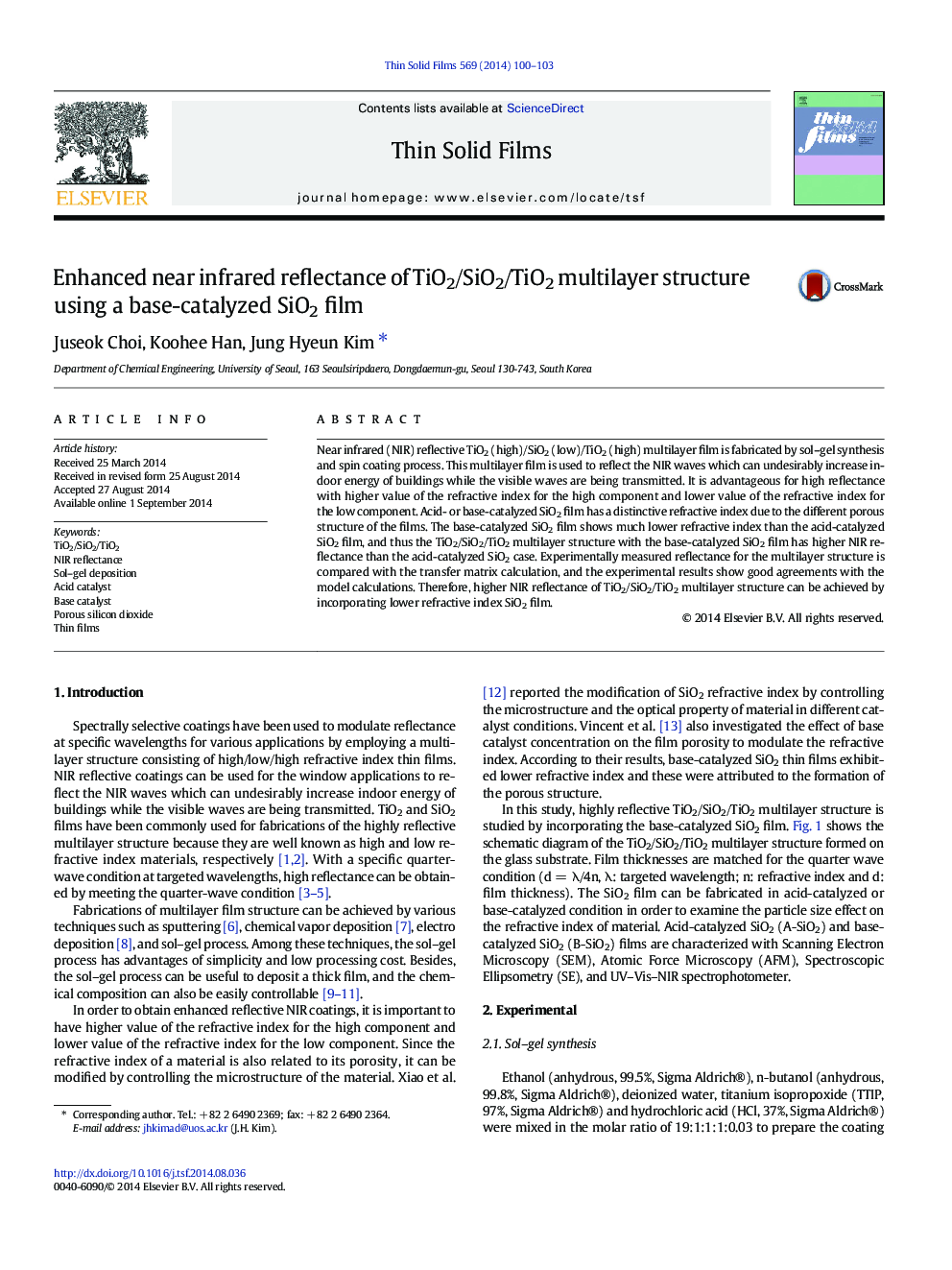| Article ID | Journal | Published Year | Pages | File Type |
|---|---|---|---|---|
| 1665264 | Thin Solid Films | 2014 | 4 Pages |
•TiO2/SiO2/TiO2 multilayer structure fabricated by sol–gel process and spin coating•Formation of the porous structure of the base-catalyzed SiO2 film•Low refractive index value of the SiO2 film using the base-catalyst•Improved NIR reflectance from the multilayer with the base-catalyzed SiO2 film
Near infrared (NIR) reflective TiO2 (high)/SiO2 (low)/TiO2 (high) multilayer film is fabricated by sol–gel synthesis and spin coating process. This multilayer film is used to reflect the NIR waves which can undesirably increase indoor energy of buildings while the visible waves are being transmitted. It is advantageous for high reflectance with higher value of the refractive index for the high component and lower value of the refractive index for the low component. Acid- or base-catalyzed SiO2 film has a distinctive refractive index due to the different porous structure of the films. The base-catalyzed SiO2 film shows much lower refractive index than the acid-catalyzed SiO2 film, and thus the TiO2/SiO2/TiO2 multilayer structure with the base-catalyzed SiO2 film has higher NIR reflectance than the acid-catalyzed SiO2 case. Experimentally measured reflectance for the multilayer structure is compared with the transfer matrix calculation, and the experimental results show good agreements with the model calculations. Therefore, higher NIR reflectance of TiO2/SiO2/TiO2 multilayer structure can be achieved by incorporating lower refractive index SiO2 film.
